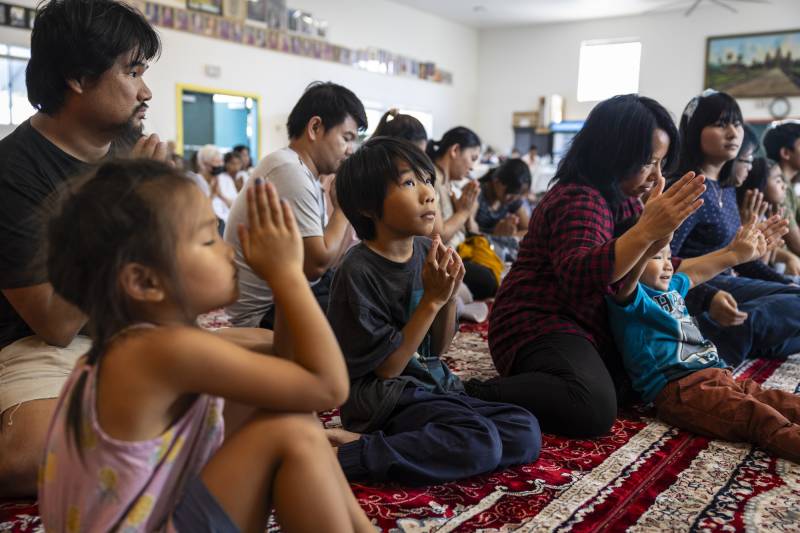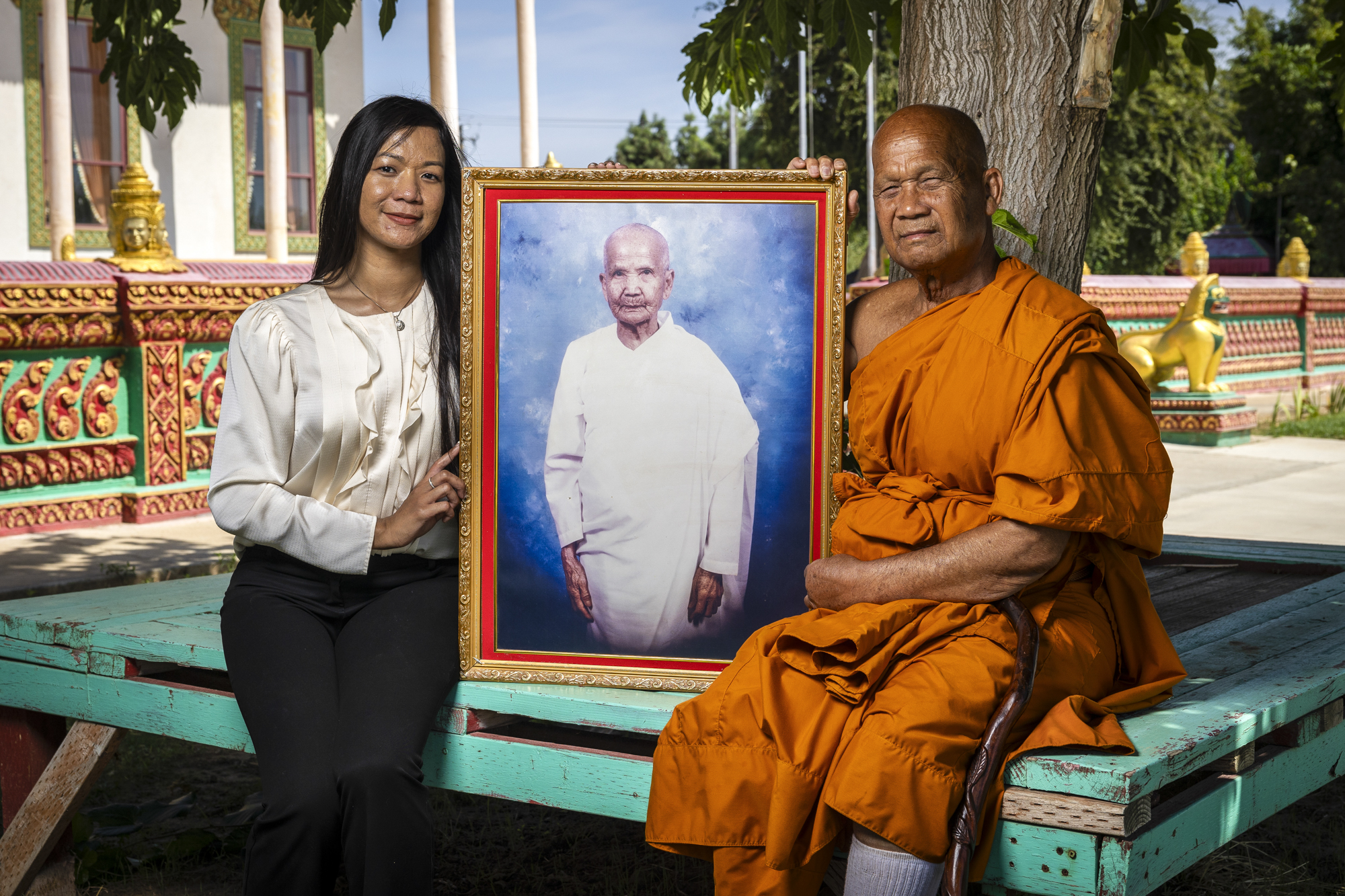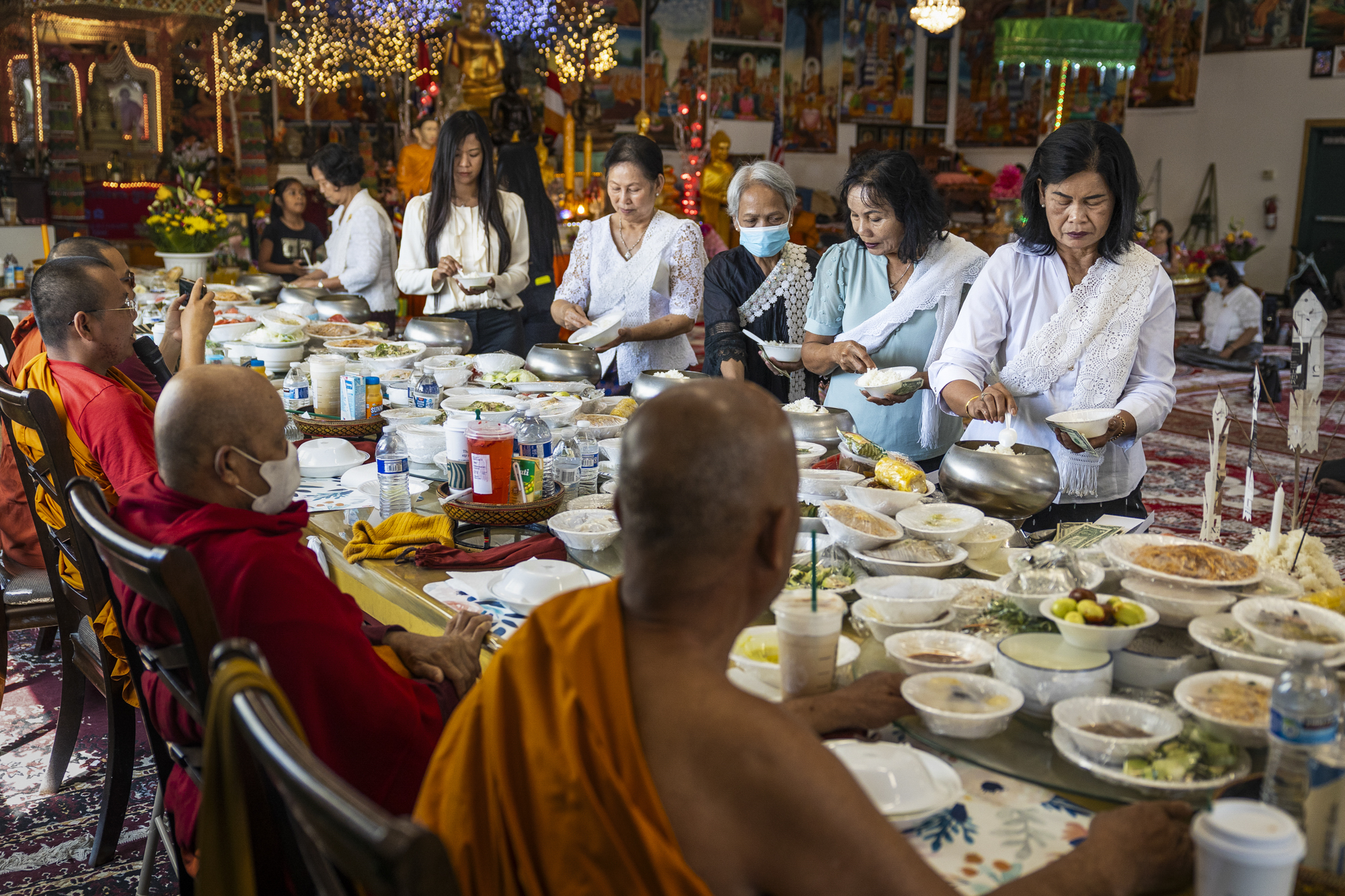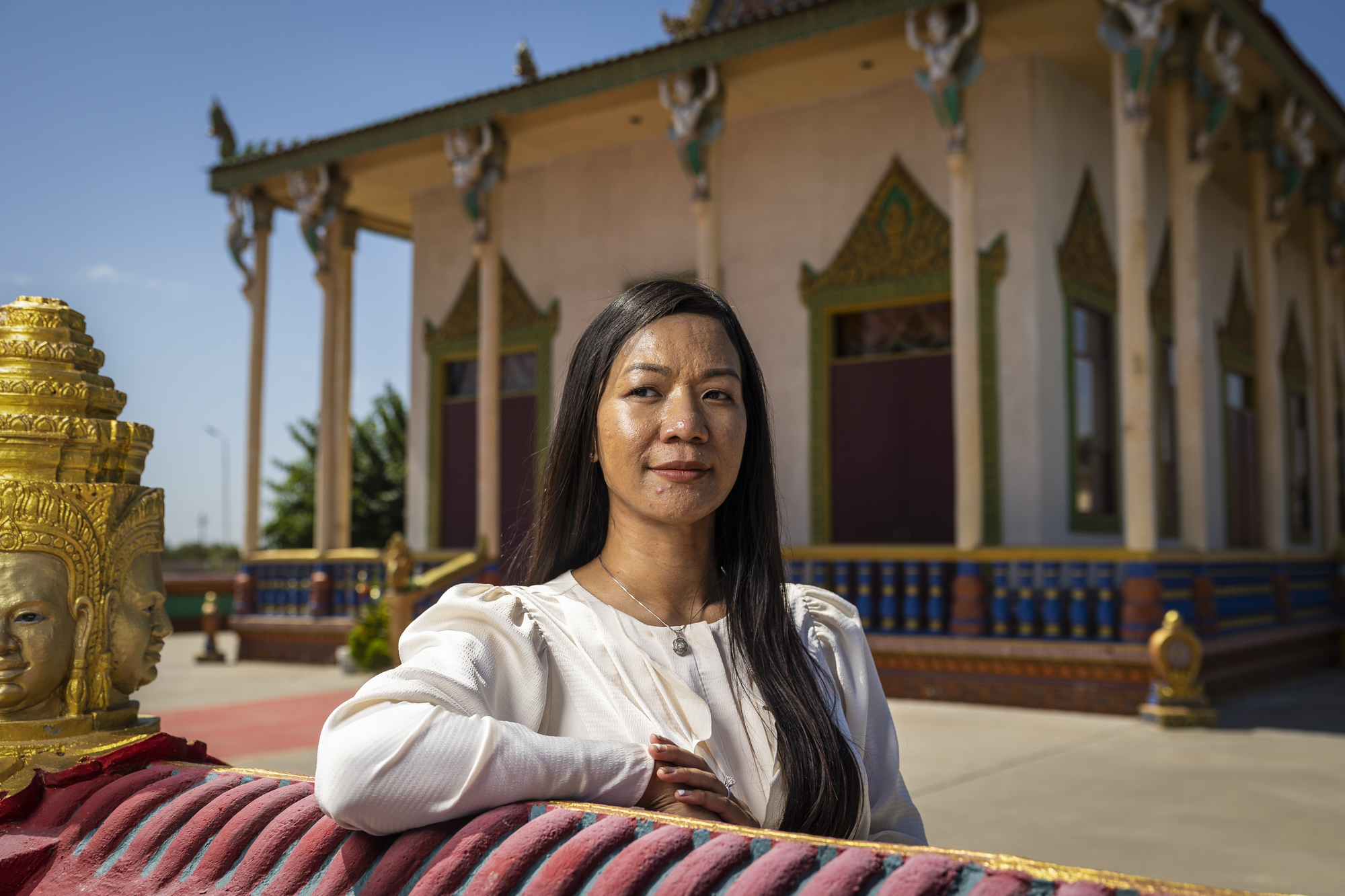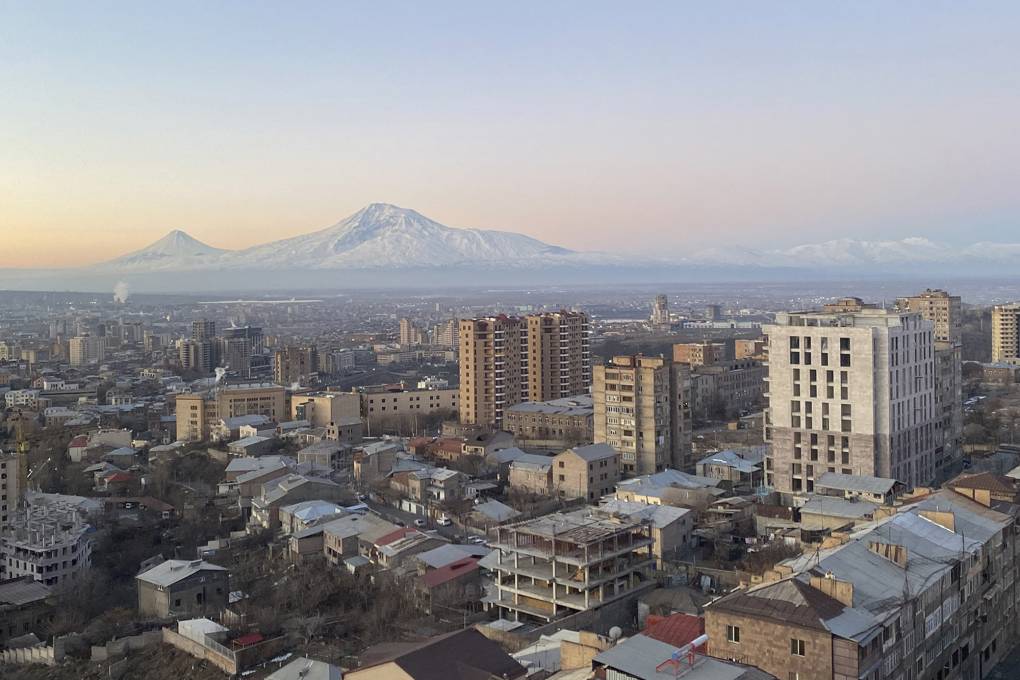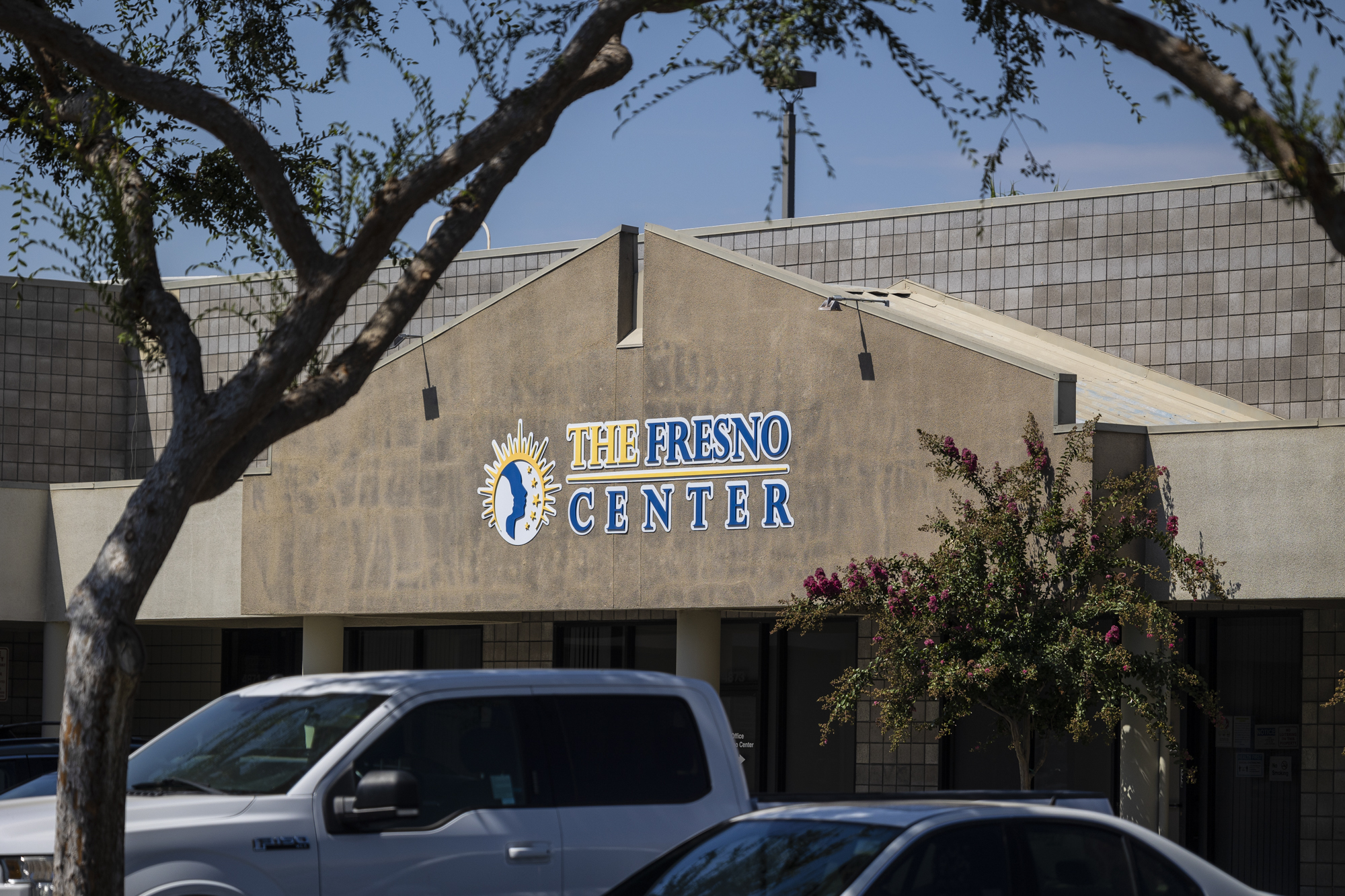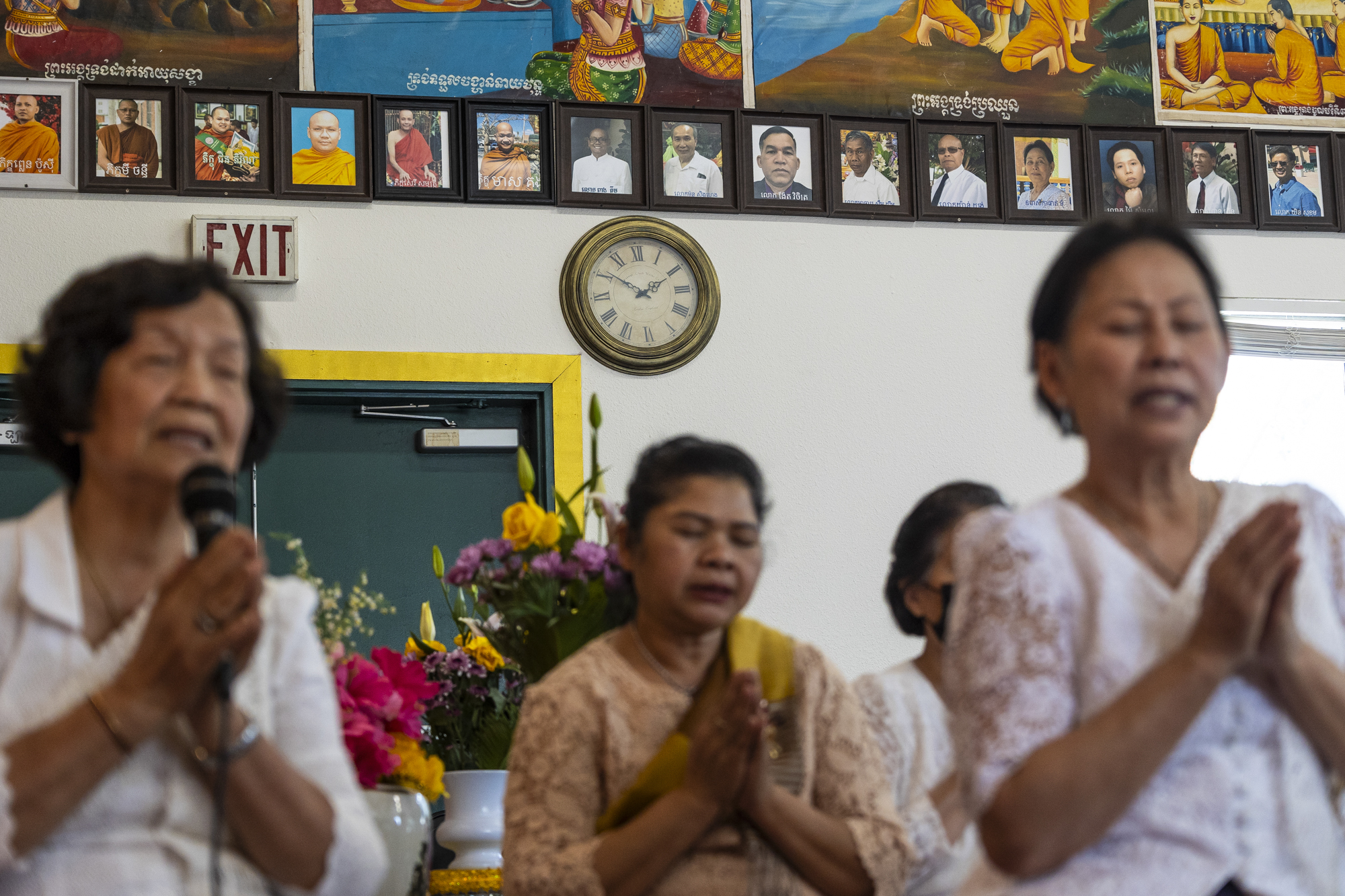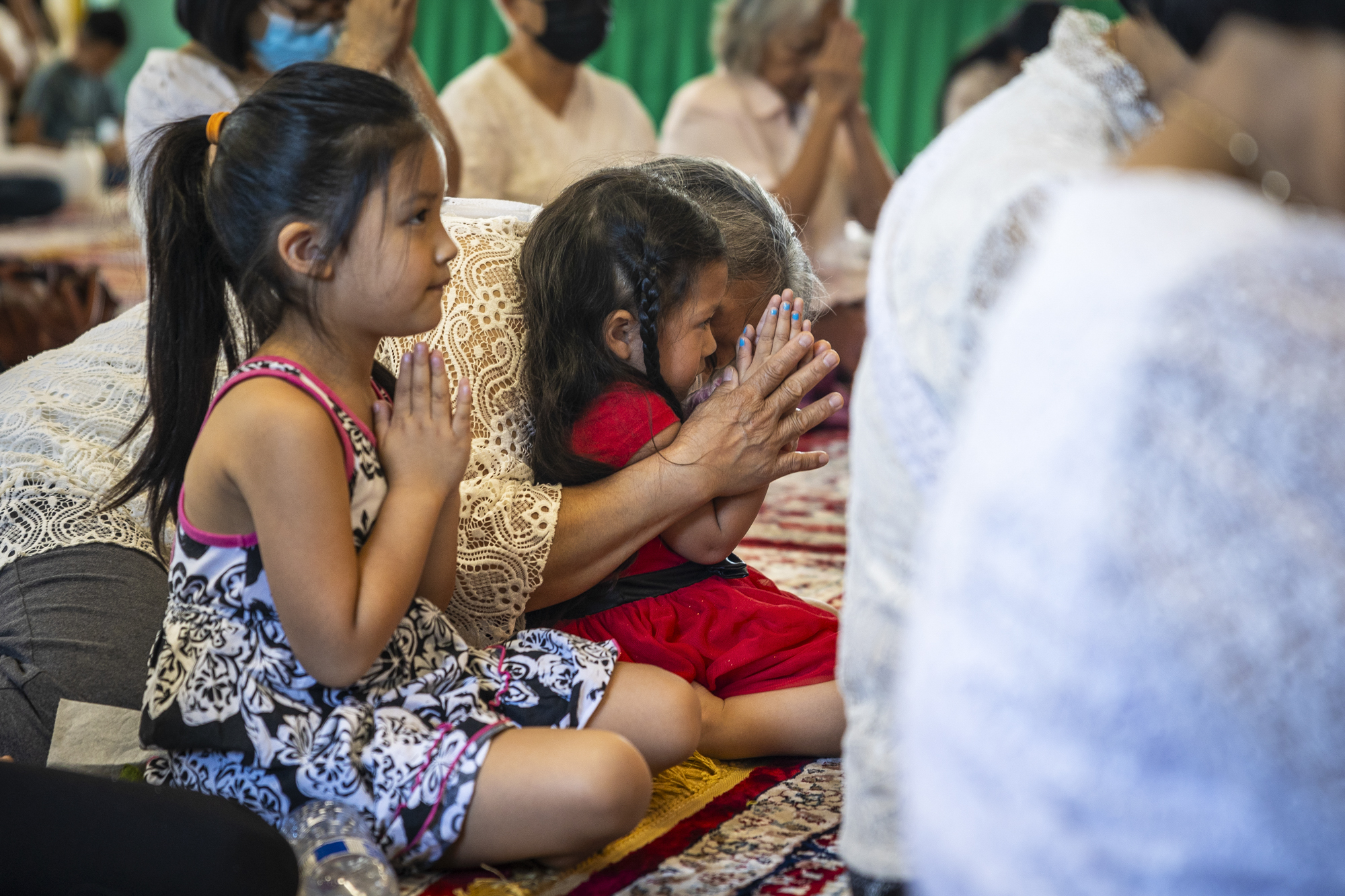If you or someone you know may be considering suicide or is in crisis, call or text 988 to reach the Suicide & Crisis Lifeline.
L
ions and angels guard the perimeter of the main pagoda at Fresno’s largest Cambodian Buddhist temple, resplendent in gold, green and red hues. They were witness to the inauguration of the temple’s first-ever abbot, a lifelong appointment so rare that dozens of Cambodian Buddhist monks from around the world flew in to offer blessings.
A sea of orange robes lined the procession route winding around the pagoda. At the center, the new abbot, Say Bunthon, sat atop a chariot serenely taking in the scene. Temple-goers began their circular march as a boisterous band of musicians and singers set the rhythm. This was where I met Nancy Meas a year ago.
“Aren’t they gorgeous?” she asked, smiling from behind a row of lush flower bouquets.
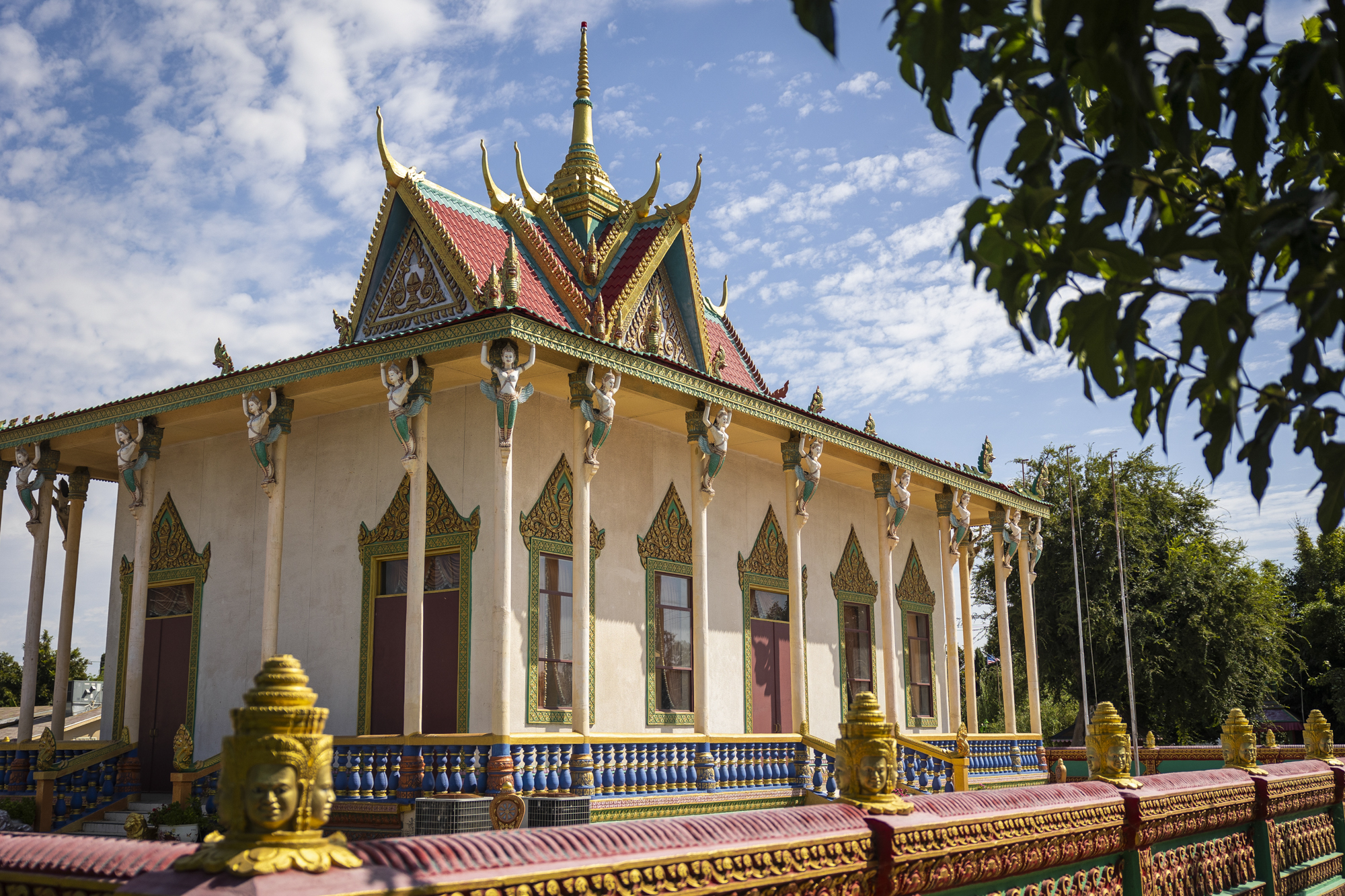
Designed to mimic the colors of the Buddhist flag, blue, orange, red, yellow and white bursts of delphiniums, snapdragons and mums were arranged on the dais. There are 12 in all, and together, they symbolize completion. For Meas, they were a hopeful sign that things were moving in a new direction.
She’s dealt with more than her fair share of pain and loss.
The 36-year-old was born and raised in Fresno to parents who fled the Khmer Rouge. From 1975 to 1979, soldiers under communist leader Pol Pot, murdered, tortured and starved people in an attempt to rebuild a society free of Western influences.
More than 40 years after the genocide killed some 2 million Cambodians, the refugees who survived are still struggling to move past the trauma they endured. And that brutal past is often echoed in the next generation — children of refugees like Meas and her siblings.
